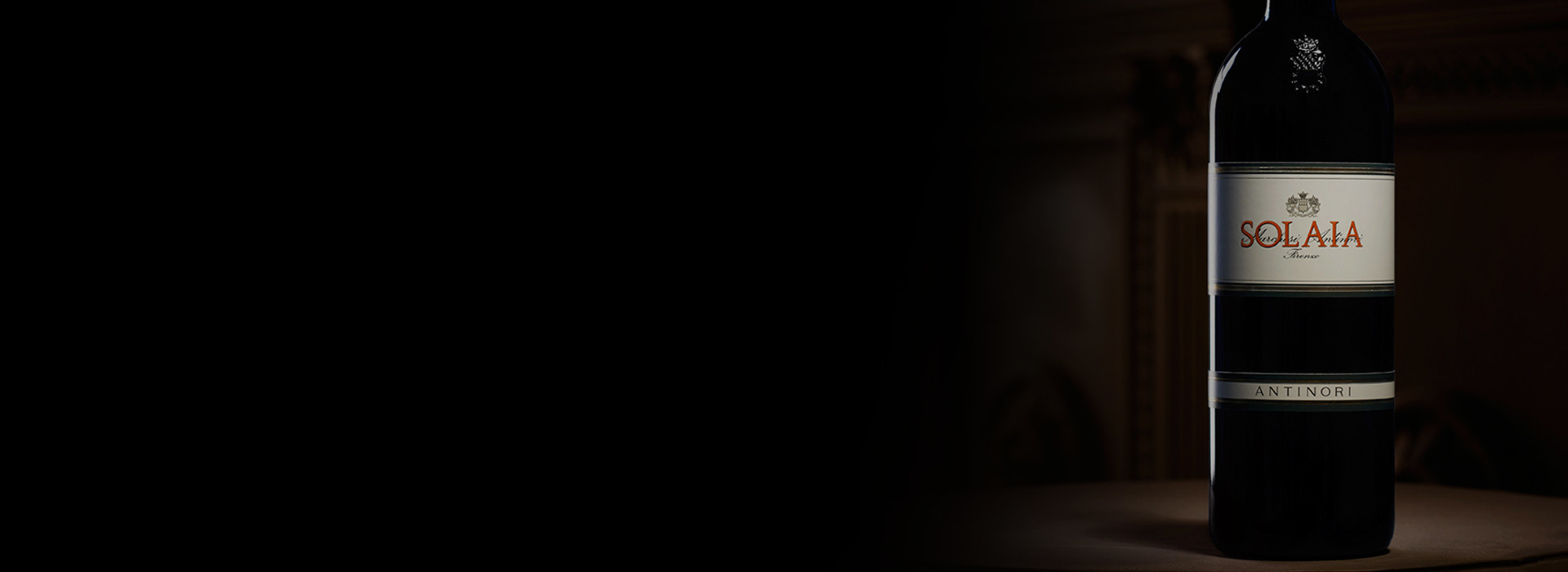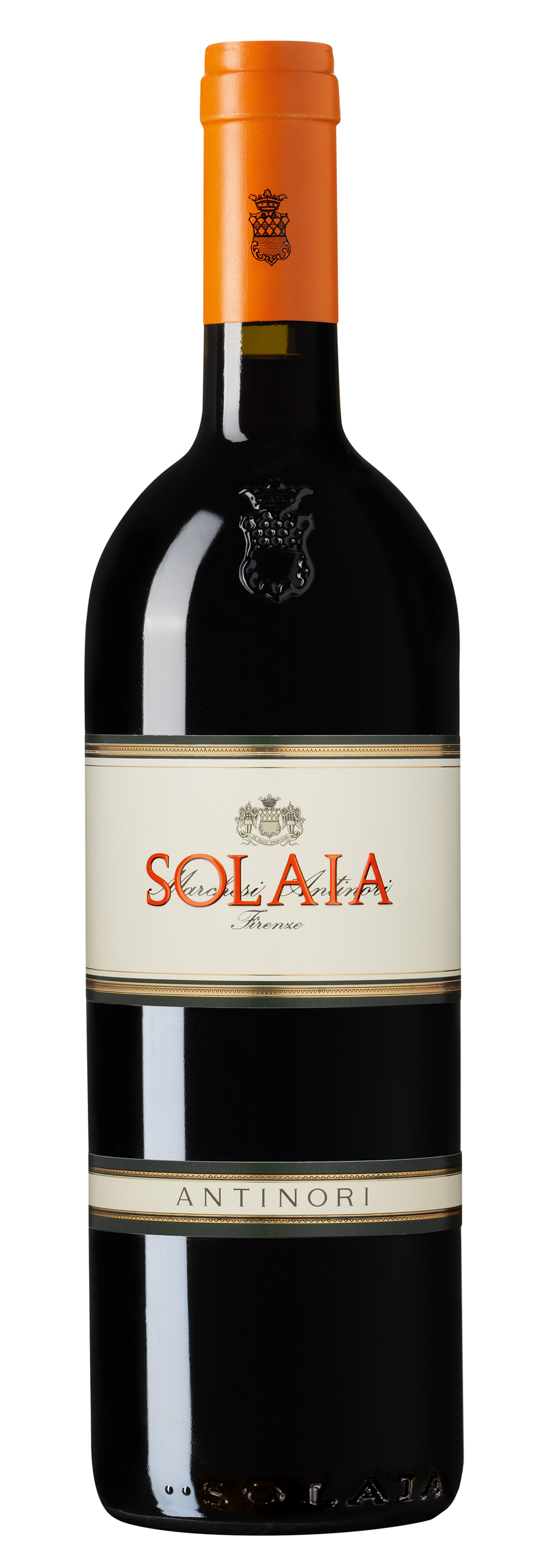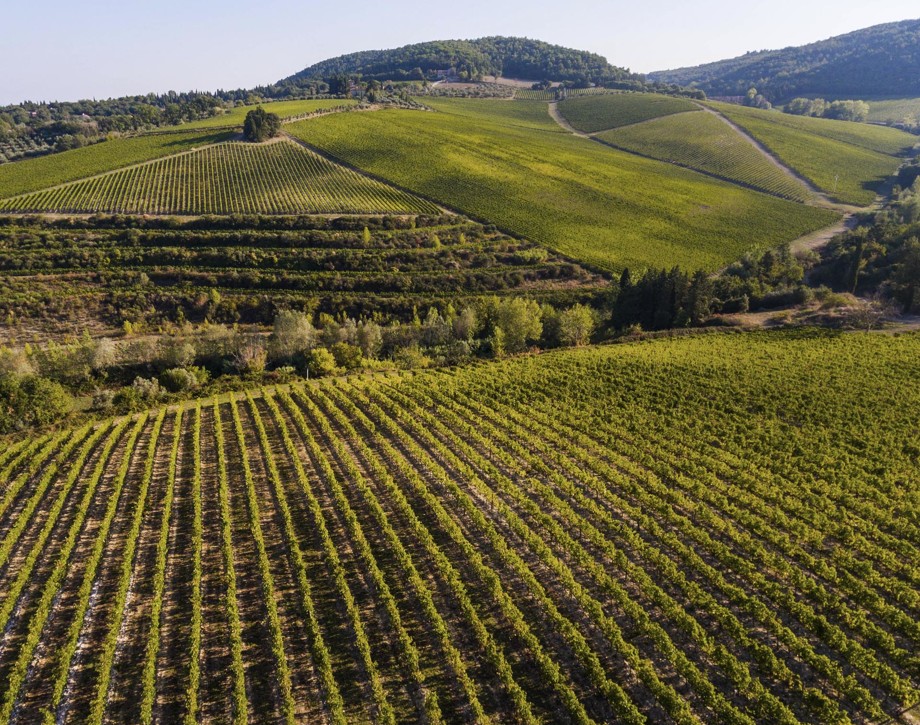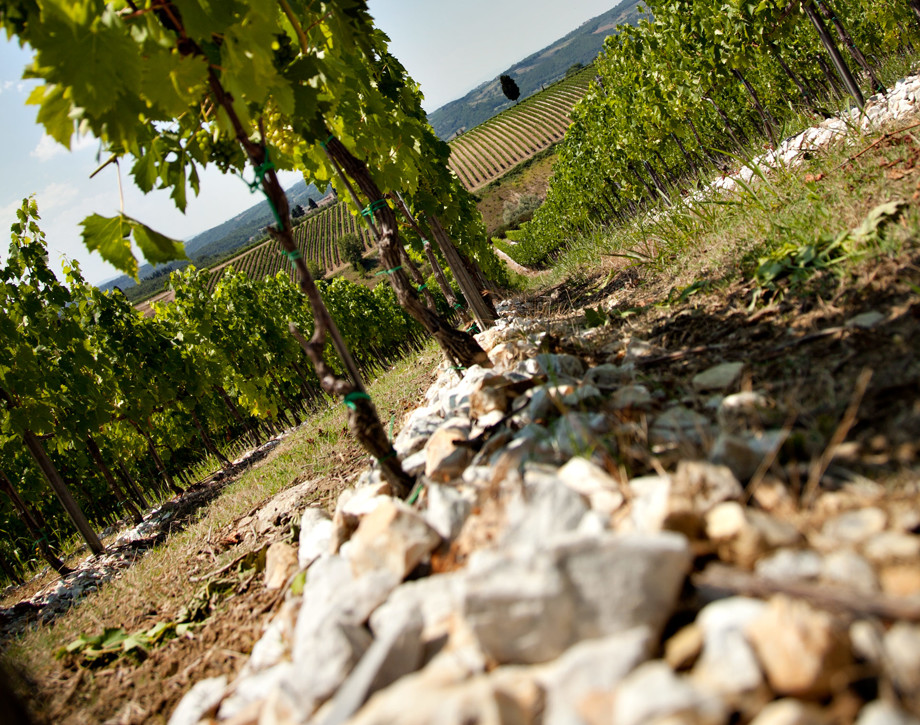Solaia

Climate
The season in the Chianti Classico production zone was characterized by an autumn and the following winter which were both cold and wet; winter rains guaranteed good and useful water reserves in the ground during the first part of spring, which was initially mild, without any return of winter cold. The bud break in the vineyard, accordingly, was a regular one and took place well within seasonal averages for the period; rain arrived in June and during the first days of the month of July and pushed the development of the vine vegetation. Flowering and bud set were also regular, even if the rains just cited influenced the size of the berries and the bunches, which began the summer well ahead in their ripening rhythm. The vines continued to vegetate quite abundantly during the summer months and then encountered a very hot and dry August and an initial ten days of September. Despite these conditions, the second half of September and the entire month of October enjoyed very favorable weather both in terms of the continuing warmth of the days and of the important temperature swings from daytime heat to evening and nighttime coolness. Both the Sangiovese and the Cabernet required a lengthy period on the vine to acquire full ripeness and finesse, to the point that picking took place principally during the first twenty days of October. The quality of the harvested grapes brought to the cellars was very high indeed, both in terms of their healthiness and, above all, of their ripeness and balance, raising expectations of a vintage of exceptional level. Total annual rainfall: 739 millimeters (29 inches) Average daily temperatures April 1st – Ottober 31st: 21.7 °C ( Rainfall from: 293 mm April 1st – Ottober 31st: 293 millimeters (12 inches)
Vinification
Favorable climatic conditions allowed the grapes to ripen regularly, unhurriedly, and uniformly, thereby enabling picking operations to go forward in a way which allowed the maximum attention to nuances and detailed differences in each and every single parcel of the Solaia vineyard. The grapes, after being tasted and evaluated on the basis of their overall ripeness, the coloring material in their skins, and the maturity of their pips, were carefully picked by hand into small packing cases, separating the individual parcels from one another on the basis of all the varying viticultural and oenological criteria. On their arrival in the cellars, the grapes were first destemmed and then, before pressing, selected on the sorting table; here attention to detail was at maximum levels and berries which were not completely ripe, an exception in this vintage, were discarded and only perfect ones wound up in the fermentation tanks. The must was slowly transformed into wine in the conical fermenting tanks, and the fermentation and maceration was carried out with the maximum attention to the freshness of the aromas, the extraction of color, and a handling of the tannins programmed for softness and elegance. All of this required great sensitivity, a full knowledge of the grapes which were being worked, and a constant and careful attention to the fermenting wine, which was only run off its skins after attentive daily tastings. Once the skins were separated from the juice the wine was moved towards the malolactic fermentation, which took place in small oak barrels to give greater finesse and future drinking pleasure. The aging process then began and lasted eighteen months in French oak; during this period the various lots, fermented and aged separately according to the grape variety and the other variables (vineyard plot, ripeness, character), completed their aging and were assembled a few months before bottling.
Historical Data
Solaia is a 50 acre (20 hectare) vineyard with a southwestern exposure located at an altitude between 1150 and 1325 feet (350-400 meters) above sea level and with a stony soil of “alberese” (hard limestone) and “galestro” (flaky calcareous clay) rock. The vineyard is located at the Tignanello estate. The Antinori family produced this wine for the first time in the year 1978, and the initial blend was 80% Cabernet Sauvignon, and 20% Cabernet Franc, a formula repeated in 1979 as well. In the following years, 20% of Sangiovese was introduced and certain adjustments were also made in the rapport between Cabernet Sauvignon and Cabernet Franc until the current blend was settled upon. Solaia is produced only in exceptional vintage, and was not produced in 1980, 1981, 1983, 1984, and 1992.
Tasting Notes
The 2009 Solaia shows a ruby red color. On the palate the wine is smooth which is the result of perfectly ripe grapes along with sensations of coffee, chocolate, mint, and licorice. The wine impresses for its finesse and structure, and is characterized by great elegance and aging potential, with its soft and velvety tannins.
Awards
I Vini Di Veronelli 2013 Super Tre Stelle Italy Associazione Italiana Sommelier "Duemilavini 2013" Guide 5 Grappoli Italy Annuario L. Maroni 90/100 Italy Wine Spectator 95/100 USA Wine Enthusiast 97/100 + Cellar Selection USA Wine Advocate 96+/100 USA Antonio Galloni 96+/100 USA Vinum 18/20 Italy Falstaff 95/100 Austria James Suckling 96/100 USA Int Wine Cellar 93+/100 USA

The Wine
The sunniest part of the Tignanello's hillside is home to the Solaia vineyard. The very best grapes from the very best vineyard. All the rest is passion, the utmost care and research. These are the secrets of Solaia together with the finest Cabernet Sauvignon, Cabernet Franc and Sangiovese grapes from its namesake vineyard.

Climate
The season in the Chianti Classico production zone was characterized by an autumn and the following winter which were both cold and wet; winter rains guaranteed good and useful water reserves in the ground during the first part of spring, which was initially mild, without any return of winter cold. The bud break in the vineyard, accordingly, was a regular one and took place well within seasonal averages for the period; rain arrived in June and during the first days of the month of July and pushed the development of the vine vegetation. Flowering and bud set were also regular, even if the rains just cited influenced the size of the berries and the bunches, which began the summer well ahead in their ripening rhythm. The vines continued to vegetate quite abundantly during the summer months and then encountered a very hot and dry August and an initial ten days of September. Despite these conditions, the second half of September and the entire month of October enjoyed very favorable weather both in terms of the continuing warmth of the days and of the important temperature swings from daytime heat to evening and nighttime coolness. Both the Sangiovese and the Cabernet required a lengthy period on the vine to acquire full ripeness and finesse, to the point that picking took place principally during the first twenty days of October. The quality of the harvested grapes brought to the cellars was very high indeed, both in terms of their healthiness and, above all, of their ripeness and balance, raising expectations of a vintage of exceptional level. Total annual rainfall: 739 millimeters (29 inches) Average daily temperatures April 1st – Ottober 31st: 21.7 °C ( Rainfall from: 293 mm April 1st – Ottober 31st: 293 millimeters (12 inches)
Vinification
Favorable climatic conditions allowed the grapes to ripen regularly, unhurriedly, and uniformly, thereby enabling picking operations to go forward in a way which allowed the maximum attention to nuances and detailed differences in each and every single parcel of the Solaia vineyard. The grapes, after being tasted and evaluated on the basis of their overall ripeness, the coloring material in their skins, and the maturity of their pips, were carefully picked by hand into small packing cases, separating the individual parcels from one another on the basis of all the varying viticultural and oenological criteria. On their arrival in the cellars, the grapes were first destemmed and then, before pressing, selected on the sorting table; here attention to detail was at maximum levels and berries which were not completely ripe, an exception in this vintage, were discarded and only perfect ones wound up in the fermentation tanks. The must was slowly transformed into wine in the conical fermenting tanks, and the fermentation and maceration was carried out with the maximum attention to the freshness of the aromas, the extraction of color, and a handling of the tannins programmed for softness and elegance. All of this required great sensitivity, a full knowledge of the grapes which were being worked, and a constant and careful attention to the fermenting wine, which was only run off its skins after attentive daily tastings. Once the skins were separated from the juice the wine was moved towards the malolactic fermentation, which took place in small oak barrels to give greater finesse and future drinking pleasure. The aging process then began and lasted eighteen months in French oak; during this period the various lots, fermented and aged separately according to the grape variety and the other variables (vineyard plot, ripeness, character), completed their aging and were assembled a few months before bottling.
Historical Data
Solaia is a 50 acre (20 hectare) vineyard with a southwestern exposure located at an altitude between 1150 and 1325 feet (350-400 meters) above sea level and with a stony soil of “alberese” (hard limestone) and “galestro” (flaky calcareous clay) rock. The vineyard is located at the Tignanello estate. The Antinori family produced this wine for the first time in the year 1978, and the initial blend was 80% Cabernet Sauvignon, and 20% Cabernet Franc, a formula repeated in 1979 as well. In the following years, 20% of Sangiovese was introduced and certain adjustments were also made in the rapport between Cabernet Sauvignon and Cabernet Franc until the current blend was settled upon. Solaia is produced only in exceptional vintage, and was not produced in 1980, 1981, 1983, 1984, and 1992.
Tasting Notes
The 2009 Solaia shows a ruby red color. On the palate the wine is smooth which is the result of perfectly ripe grapes along with sensations of coffee, chocolate, mint, and licorice. The wine impresses for its finesse and structure, and is characterized by great elegance and aging potential, with its soft and velvety tannins.
Awards
I Vini Di Veronelli 2013 Super Tre Stelle Italy Associazione Italiana Sommelier "Duemilavini 2013" Guide 5 Grappoli Italy Annuario L. Maroni 90/100 Italy Wine Spectator 95/100 USA Wine Enthusiast 97/100 + Cellar Selection USA Wine Advocate 96+/100 USA Antonio Galloni 96+/100 USA Vinum 18/20 Italy Falstaff 95/100 Austria James Suckling 96/100 USA Int Wine Cellar 93+/100 USA

Tenuta Tignanello
The Tenuta Tignanello estate is in the heart of Chianti Classico, in the gently rolling hillsides between the Greve and Pesa river valleys. It extends over an area of 319 hectares (788 acres), of which 130 (321 acres) are dedicated to vines. Two of the estate’s prized vineyards are on the same hillside, Tignanello and Solaia, on soils that originated from marine marlstone from the Pliocene period rich in limestone and schist. The vines enjoy hot temperatures during the day and cooler evenings throughout the growing season. The estate’s two signature wines, Solaia and Tignanello, are produced from these vineyards and have been defined by the international press as “among the most influential wines in the history of Italian viticulture”. According to Marchesi Antinori, Solaia and Tignanello are an ongoing challenge and a never-ending passion. The Tignanello estate has vineyards of indigenous Sangiovese grapes as well as some other untraditional varieties such as Cabernet Franc.

Soil
Soils originating in the Pliocene period, rich in marine fossils with veins of clay. Rich presence of calcareous rocks and marl.
















